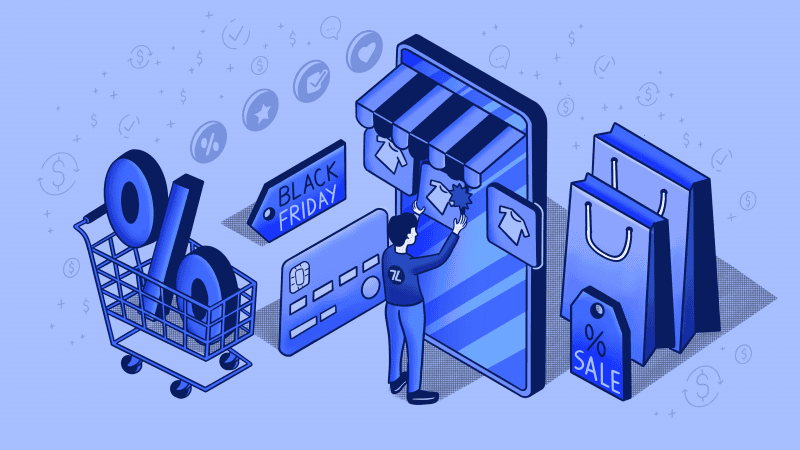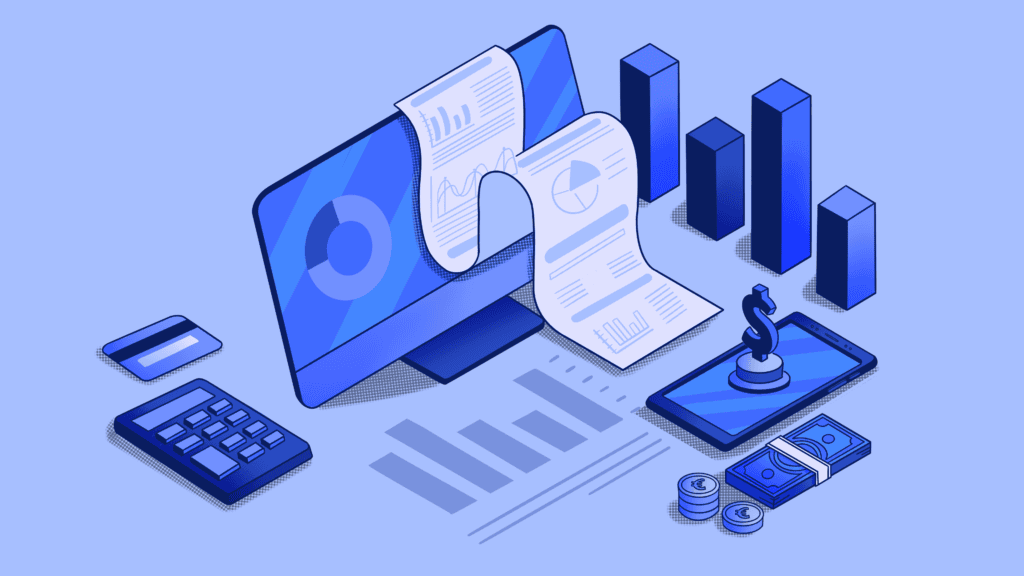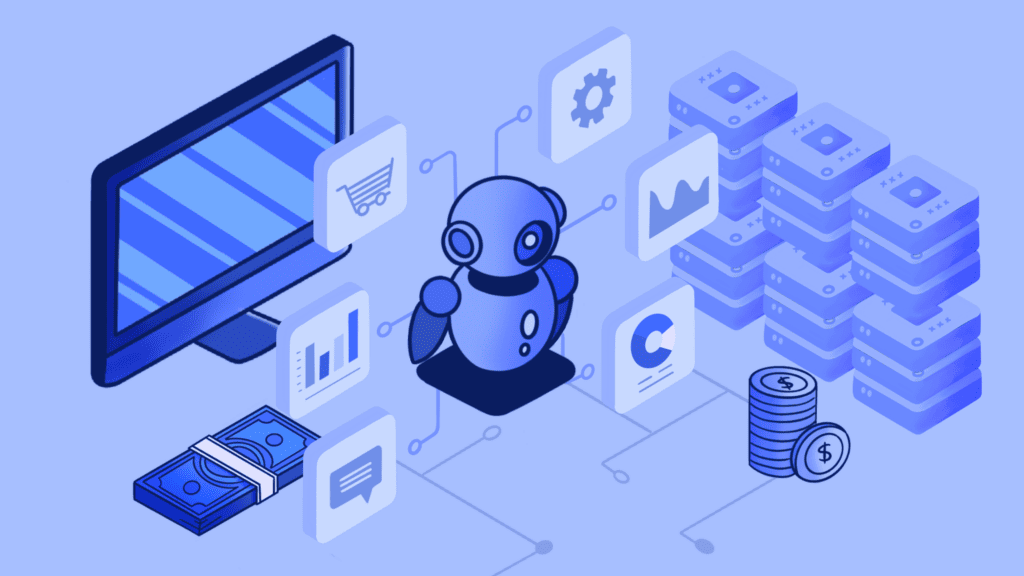Updated Thursday 14th of September 2023
Pricing for Black Friday in 2023
Retailers face many unique challenges when setting prices for Black Friday in 2023. The post-pandemic market correction and ongoing inflationary pressures are having a profound effect on the way consumers spend, and these factors must be considered when developing a pricing strategy. In 2023, it is particularly important to pay attention to:
Price elasticity
Consumers today are feeling the pinch, and many are looking for ways they can save money. This can mean that they are more reluctant to spend, even on Black Friday when deals are widespread. However, this can also mean that they are more open to purchasing their most sought after products at a discount. The key is to accurately determine the price elasticity of each of your products – this is made possible with machine learning.
Read on: Price elasticity – the key to optimal prices
Stock levels
Stock challenges, particularly excess stock, have become prevalent in the wake of the covid pandemic. The massive switch to online shopping, and the gradual trend back to the norm, have left many retailers battling with stock issues as they try to navigate this dynamically changing market. On Black Friday, it is important to strike the right balance in order to avoid a situation where you either sell out too quickly, or have product left over.
Inventory-based pricing is one such method of effectively managing stock levels. Learn more in our recently published whitepaper “Retailer’s Guide to Overcoming Overstock“.
How customers shop on Black Friday
Black Friday and Cyber Monday hail from the USA, but they have since made their way to Germany, offering shoppers the best deals of the entire year. Black Friday takes place on the fourth Friday in November—the day after the American Thanksgiving holiday. Cyber Monday follows on the Monday after that.
Both days are particularly important for online stores. According to a survey by Statista conducted in 2019, over 90% of the consumers surveyed were familiar with Black Friday, and a good 43% of them also intend to purchase discounted products on that day. In recent years, online purchases and thus turnover on both days has increased continuously. In the USA alone, they amounted to 7.4 billion US dollars on Black Friday in 2019, and even around 9.4 billion US dollars on Cyber Monday. Even in Germany, consumers planned to shop for more than €200 per capita on Black Friday 2018. In Germany, the expenditure on both days in 2018 reached a volume of around €2.5 billion.
But what about in 2023? In 2023, as consumers are tightening their budgets due to inflation and uncertainty in the economy, one might think that spending will be down this holiday season. However, data shows that consumers are continuing to spend. One important reason behind this is a concept known as “price elasticity of demand,” or a shift in consumers’ sensitivity to prices.
Coming out of the pandemic, consumers are less sensitive to high prices, leading to this increase in spending. Experts believe this is due to adjustments in spending routines and the types of items that consumers were purchasing during lockdowns and time spent at home. If this trend, this could mean a big year for retail over the course of Black Friday, Cyber Monday and the entire 2023 holiday season.
Did you know?
In 2018, high on the Black Friday shopping list in Germany were clothing and shoes (35%), care and beauty products (15%) as well as films, music and video and computer games (11% each).
Source: Statista Dossier “Black Friday and Cyber Monday”
While 43% of respondents said that they had been looking at Black Friday and Cyber Monday for some time, 40% of those surveyed were spontaneous. With the right pricing strategy and Dynamic Pricing, both customer groups can be targeted.
Best practices for Black Friday
1. Start preparation in time
Retailers who want to profit from discount battles need an effective, well-thought-out pricing strategy, and that means that it’s good to get started a few weeks in advance.
2. Set goals
- What are your revenue, sales and profit goals?
- Are you trying to sell off certain categories or products?
- Is there a strategic goal: for example, to lower prices in order to improve your price image or to win new customers?
3. Think about possible scenarios
- What levels of revenue, profit, and sales can be achieved through which pricing strategy. This is where pricing software can help.
- What effects might high sales rates have in the weeks following Black Friday? Will it perhaps just generate a shift in demand?
- Could high sales within a short period of time lead to supply shortages?
4. Coordinate marketing and pricing activities
- Promote your offer the day before as well as on Black Friday across your social media channels like Facebook or Instagram.
- Employ targeted online advertising (on Facebook, for example) and use Google Ads to place advertisements.
- Integrate email marketing into your strategy. Send an email to your customers a few days in advance to inform them about Black Friday and Cyber Monday discounts and top deals.
5. Generate special offers
- Create a landing page specifically for Black Friday so that your visitors get an overview of your offer. This doesn’t just help with SEO, but makes it easier for customers to search for your company and products.
- Reward loyal customers the evening before Black Friday with discounted items. Direct them to a personalized landing page with special “loyal customer” discounts.
- Send customers a reminder if they have abandoned their shopping cart, ideally with a rebate code.
- Offer an extended return policy: on Black Friday and Cyber Monday, many customers buy Christmas gifts. Offering returns after Christmas is therefore particularly appealing to customers.
Did you know?
Banners and pop-up reminders on your website like “Almost sold out!” Or “Only one left” convey urgency, so we definitely recommend using these on Black Friday.
6. Use coupons and discounts effectively
- High discounts of 20%, 30% or 50% are exactly what customers are expecting on Black Friday. A discount can be easily implemented, adjusted quickly, and communicated clearly through your website or via email. However, flat-rate discounts don’t work across the board when it comes to turnover or profit, even on Black Friday. Customers react differently to price changes depending on the product, so it’s important to set differentiated discounts on articles based on their price elasticity. For example, items with high price elasticity should be given higher discounts. Your best bet is to discount items that have a high profit margin.
- Coupons are an excellent tool for attracting certain kinds of customers to your website. However, a pricing strategy based exclusively on coupons is not recommended. Instead, use coupons in combination with discounts.
Expert opinion
„The best offers are overstocked bestsellers with a somewhat modest discount and discontinued products with a better discount. It all has to fit with your branding strategy and focus on acquiring new customers and rewarding existing customers. Flat discounts seem lazy and desperate, which will hurt your brand perception.” Matthew Dean, VP Digital, Worldwide at HUGO BOSS
And last but not least: avoid price increases directly before Black Friday. Targeted price changes at this critical time can be off-putting for customers. If you need to increase your prices, do so in October.
How machine learning and dynamic pricing can help you optimize your pricing strategy
Retailers who want to stay ahead in terms of sales and profits on Black Friday need to leverage the full potential of their data to optimize pricing. A deep understanding of customers’ price elasticity is critical, and that’s exactly where advanced pricing software can support retailers with dynamic pricing. This software measures the price disposition of customers and automatically suggests the optimal discount for each product. This way, retailers can ensure that their pricing strategy exploits their full margin potential.
With advanced pricing software, you can simulate various price scenarios for individual categories, forecasting revenue, sales and profit outcomes for your respective targets. Pricing software also makes it possible to employ different strategies for selected categories which are expected to sell out quickly, for example.
Advanced pricing software uses machine learning so that retailers can capture unique customer behavior and thus improve their pricing. The machine learning algorithms are used to calculate products’ price elasticity based on data gathered from past sales activities, such as those from Black Friday in 2019. In other words: sales volume and all the relevant influencing parameters that go into achieving them – from the competitors’ prices to weather and seasonality – are all factored in by the software when calculating optimal prices. Compared to the more traditional rule-based pricing, dynamic pricing offers highly accurate predictions and enables differentiated, smart price setting, which in turn leads to higher revenue and profits for retailers.
You can find more information on machine-learning-based pricing here.



